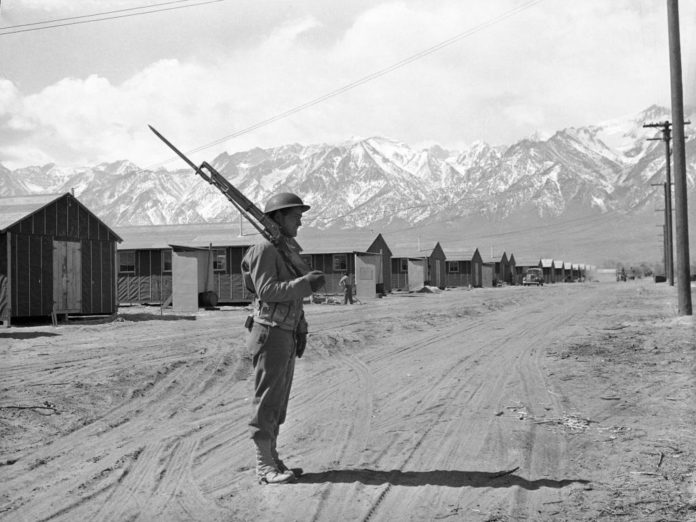How many dozens of times since the 1970s have I driven past Manzanar and yet never stopped?
Impossible to say. Going to Mammoth to ski as a teenager, going to the Eastern Sierra to fish for the last 25 years, apparently I am always in too much of a rush to get there. Or, on the way south, to get home.
Truthfully, I’d probably give Auschwitz a miss, too. I’m not much for concentration camps. They scare me. I’m not proud of my fearfulness; and hey, it’s not me, neither Jewish nor of Japanese descent, who gets herded into them, after all.
I know that term — concentration camp — is felt to be an exaggeration by some when it comes to Manzanar, Gila River and the other places where, citizen and non-citizen alike, Japanese families were forced to live during World War II.
Few of the concentrated were actually killed, seems to be the argument.
I don’t see it as an exaggeration at all. Those imprisoned used to live freely. Then they were forced from their homes and businesses all over Southern California to live in shacks.
Mostly, contrary to what they were told, their homes and businesses were stolen from them during their incarceration. It was an abomination.
Done for their own protection, after Pearl Harbor? You wouldn’t think so if you were to watch, as I just did, a film called “The Manzanar Fishing Club,” by producer/director Cory Shiozaki, a third-generation Japanese American who is a docent at the Manzanar National Historic Site, a fly fishing guide and the descendant of a family that was rounded up, and his talented team.
Manzanar for a time was the biggest town between Los Angeles and Reno in eastern California. Though its residents lived behind barbed wire, with guard towers at the corners and machine guns facing down and in, local White long-timers in the region said they were fearful of a mass escape and the film shows one of the signs that was posted in Independence and Lone Pine: “Jap hunting license: open season, no limit.”
While I haven’t been there, my friend Brad Thiel, who is on the board of the preservationist group Pasadena Heritage, and his colleagues are expanding what preservation means, and recently organized a two-bus field trip to Manzanar for a tour. Knowing my interest in trout, he loaned me the DVD. It is a wonderfully Californian testament to making the best of adversity.
Because the Japanese-American culture has always been a fishing culture, the streams flowing down from the Sierra peaks both near and actually through Manzanar soon piqued the interest of residents. They made a few clandestine forays.
Then, Frank Kageyama says, “I went down the gully and crawled out of the camp” under the cover of darkness.
Sometimes he and his buddies would hike for hours into the mountains until sun-up, then fish back down using willow sticks as rods, and “strong thread and bent needles” as hooks. They began to establish a kind of rules of engagement with the guards.
The trout for dinner was pretty good, after all.
But Jack Semura was returning and a young guard caught him and he almost got shot.
Shim Nakamura: “I heard voices. ‘I’m fishing!’” He and others spent a week in the Manzanar jail.
It’s a great American story.
If you’re interested in hearing more, and making a pilgrimage, filmmaker Shiozaki and others are hosting a commemorative event Saturday, June 18 at Manzanar with guided tours of the fishing areas. Email 2filmdocs@gmail.com for an invitation.
Catch a big brown trout for me.
Larry Wilson is on the Southern California News Group editorial board. lwilson@scng.com.
Credit: Source link































